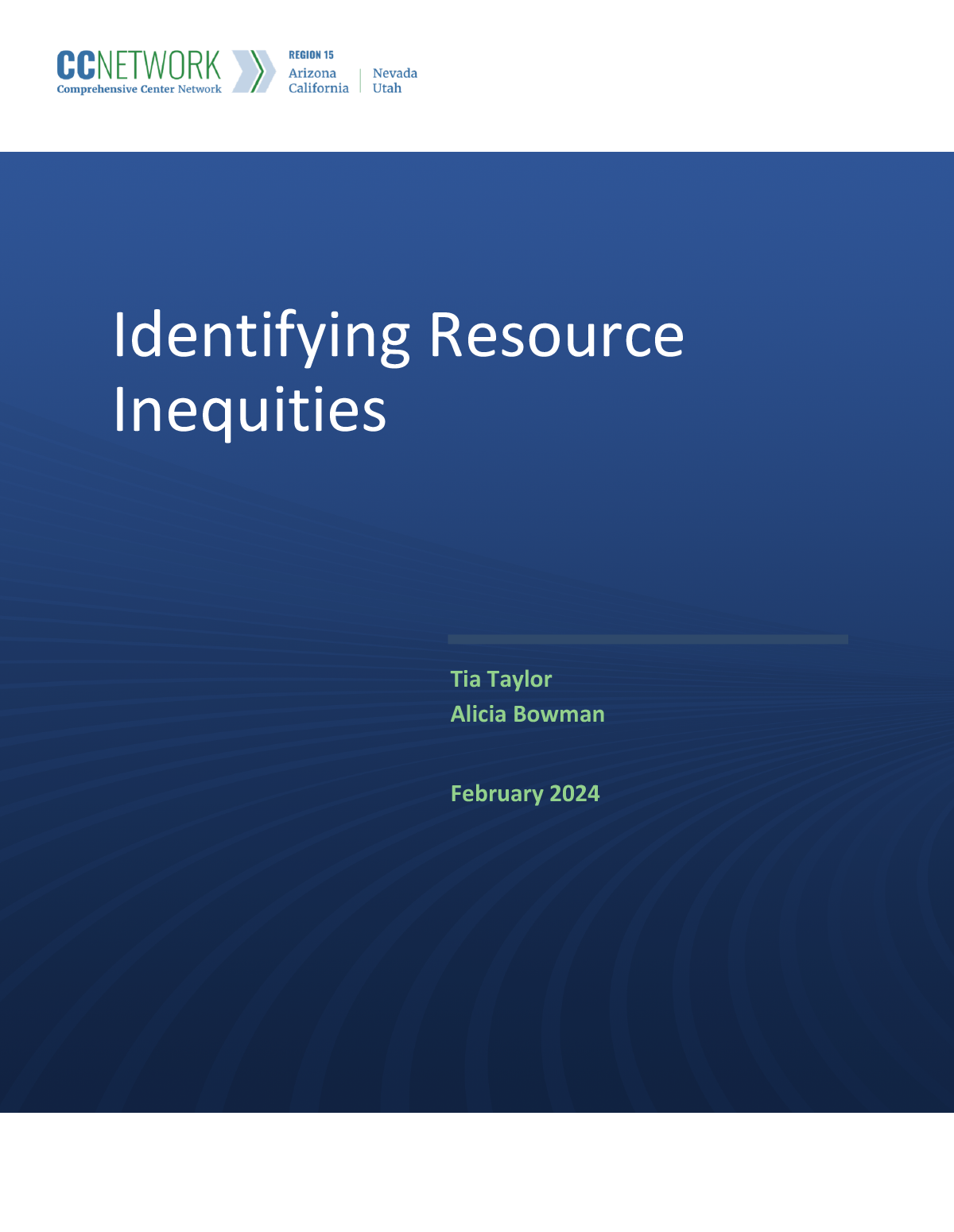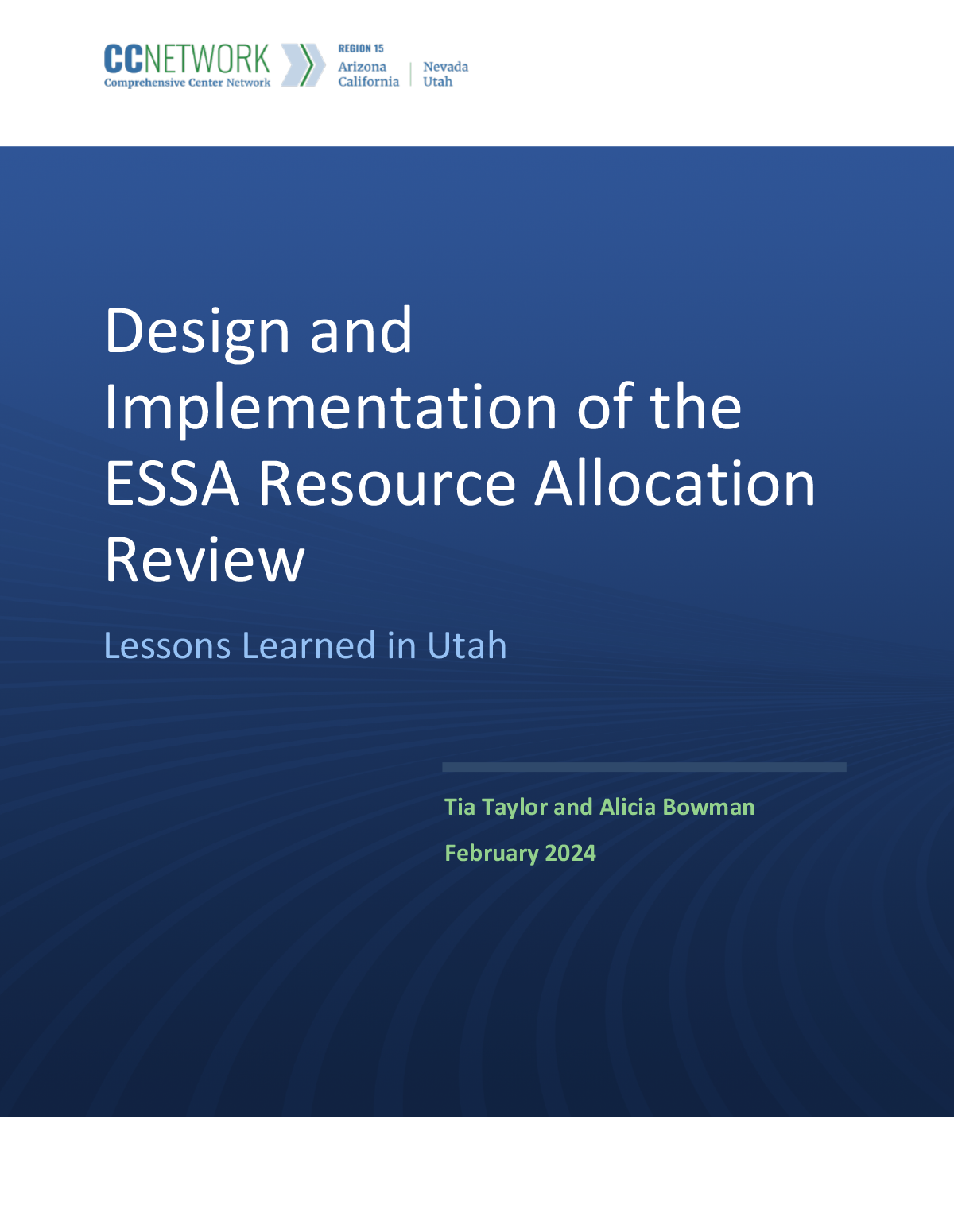Resource Allocation Review Guidance Now Available for State and Local Educational Agencies
Posted on

State and local educational agency leaders now have guidance for conducting meaningful resource allocation reviews (RARs): A suggested, systematized approach developed by the Region 15 Comprehensive Center (R15CC).
The following resources aim to assist those working on resource allocation reviews and follow R15CC’s release earlier this year of Resource Allocation Reviews: Lessons Learned Over Four Years:
 Identifying Resource Inequities is designed to help leaders identify:
Identifying Resource Inequities is designed to help leaders identify:
- educational resources beyond funding, including human resources; organization and structure of time; equipment, materials, supplies, programs and services; and community partnerships
- what to consider when conducting the reviews, and
- resource inequities and strategies for addressing them.
 Design and Implementation of the ESSA Resource Allocation Review: Lessons Learned in Utah provides a summary of discoveries and lessons learned during the partnership between R15CC and the Utah State Board of Education (USBE). Utah was one of the first states to design and begin to implement a RAR.
Design and Implementation of the ESSA Resource Allocation Review: Lessons Learned in Utah provides a summary of discoveries and lessons learned during the partnership between R15CC and the Utah State Board of Education (USBE). Utah was one of the first states to design and begin to implement a RAR.
The summary shares how R15CC and USBE incorporated principles of Design Thinking—built on guidance offered by the U.S. Department of Education’s Resource Allocation Reviews Community of Practice—and consistently aimed to center a comprehensive, collaborative, and systematic approach that minimizes the burden on local school agencies. The summary also provides considerations to the recommendations arising from the U.S. Department of Education pilot of the RAR monitoring protocol and ways to streamline the review.
The Region 15 Comprehensive Center works with SEAs in Arizona, California, Nevada, and Utah to improve outcomes for all children and better serve communities through capacity-building technical assistance.
The contents of this post were developed by the Region 15 Comprehensive Center. The Region 15 Comprehensive Center is funded by a grant from the U.S. Department of Education. However, the contents of the post do not necessarily represent the policy of the Department of Education, and you should not assume endorsement by the Federal government.
